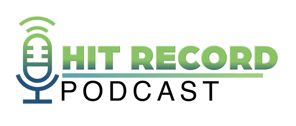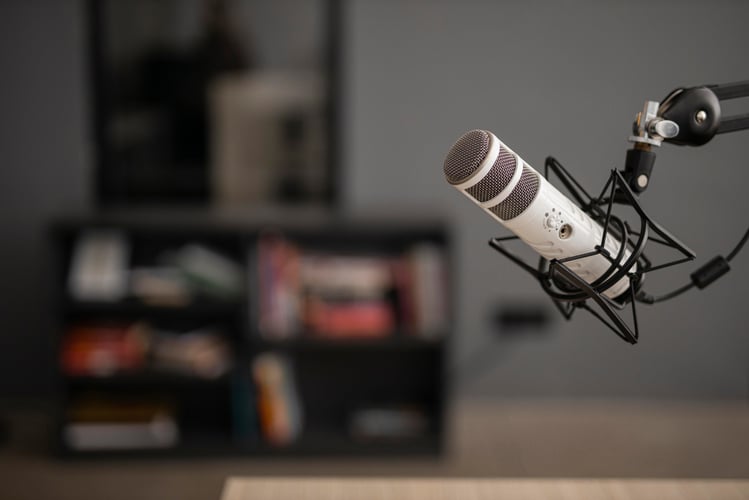Episode 13 - Creating PPC Ads that Really Convert


Don't Miss An Episode, Subscribe Now

Podcast Episode 13: The FI GROW team discusses how to create successful pay-per-click ads on Google to drive customers in-market for your community bank or credit union products and services.
Transcription:
Have you ever been talking about something that's really useful and thought, "That's a great idea, let's hit record so we can share this with everyone?” If you're looking for best practices for your bank or credit union, join us while we talk all things sales, marketing, and strategy for financial institutions. Let's make it happen with FI GROW Solutions.
Meredith Olmstead:
Hi there, it's Meredith Olmstead again from FI GROW Solutions. I am here with Ida Burr, our digital ads manager. Say hi, Ida.
Ida Burr:
Hi, everyone.
Meredith Olmstead:
So we are a marketing agency that works with financial institutions and Ida and I were just having a great conversation about pay-per-click ads on Google and about what kinds of ads really convert. And specifically, we were talking about the copy because that's really the biggest challenge for people when you're making ads is to make sure that you've got the right kind of copy in those ads that are showing up on the ad placements on Google that's going to get people's attention, get those clicks, get those conversions for you when people are in market for your products and services.
Meredith Olmstead:
So I wanted to hit record on this conversation because Ida had some really good suggestions for how she creates pay-per-click ads that really convert for our clients. So first thing we were talking about was we were talking about text ads versus responsive ads, or plain text ads versus responsive text ads. And so Ida was explaining to me that plain text ads are going away. And so she's really moving towards using more responsive text ads. So let's talk about that a little bit, Ida. Tell us a little bit more about how those ads work and how you create them so that they really convert for people.
Ida Burr:
Yeah. So the responsive text ads are pretty easy to set up. You could include, I think, up to 15 headlines and up to four descriptions. And what Google will do is they show all these different variations of the ad and they figure out which combination of headlines and descriptions convert the best and at the lowest cost. So it is a really cool way. Like essentially you're creating like who knows how many different variations of these ads with all these different combinations and you're giving Google pretty much control to figure out what works best.
Meredith Olmstead:
And how long does that usually take? Like is there like a period of time where Google has to take all that information when you create your campaign at first and then it starts to optimize like two or three options that it finds work the best?
Ida Burr:
Yes. I mean, that really depends on your budget, but usually within a couple of weeks, they are able to get through a lot of the different combinations and they start optimizing a few of them.
Meredith Olmstead:
Okay. You always call that the learning phase, where ads are in the learning phase. And that's one of the reasons why we also say when you're creating pay-per-click that really convert, you need to have campaigns that are running for a minimum of like eight to 10 weeks. Because if you're starting to try to switch things out like on a monthly basis, these ads have barely started getting through their learning phase before you start to make suggestions and changes. So that's another thing that I know that you always say. So what do you put, like when you're writing headlines, when you're creating some of those options for responsive ads, what do you put in them?
Ida Burr:
Yeah. So you definitely want to have a very good variety of different types of headlines. So some really important ones are like your branded headlines. So these would have your bank or credit union's name in them. Other ones would be, like unique ones, these would be what your current rates are, certain features. You can include things like competitive rates. Another thing we like to include is the actual area that you're targeting. So if you're in Texas, you can say mortgage rates today in Texas or Texas mortgage rates. That kind of grabs attention as well.
Meredith Olmstead:
What about calls to action? Like are there other kinds of calls to action that you put in headlines for ads that tend to convert better?
Ida Burr:
Yeah, absolutely. So if you have online applications, that is definitely something you want to include. Even trying to combine like the rate with the apply now, like apply online. So if you say like current rate 5.99%, apply online. Trying to fit it all into the small headline is really hard, but I've been able to get creative and fit two different things into the headline. Also, just making sure that you definitely include the popular search terms that people are typing into Google as well. So this is something Google actually does give you recommendations. So if it's an auto loan campaign, they will have what the top keyword searches are. So having at least like five or six just keyword headlines as well that they can filter through and add in as people are searching.
Meredith Olmstead:
Okay, that's cool. That's cool that Google will give you suggestions as you're building the headlines in the ad sets.
Ida Burr:
And sometimes they don't make sense, though. Like sometimes it'll say like Chase Bank credit card rate or something like that. And obviously you can't include something like that into your ad because you're not Chase Bank. But just using those suggestions with a little bit of a grain of salt too, so that it makes sense.
Meredith Olmstead:
So besides headlines, what other parts of ads are there that people need to be creative with when it comes to creating pay-per-click ads that really convert?
Ida Burr:
So the next biggest section would be the description. I think you get up to four different descriptions you can include, and this is kind of going to be the features of the product or service that you can't fit into those small 30 character headlines. So making sure those are pretty unique and also include calls to action. Apply online today, fast online approval process, things like that, competitive rates in your area, whatever the area is. And another thing that you can customize that is suggested is you can create the display URL to include a popular keyword as well. So if it's mortgage rates or whatever, like home loan - mortgage or something like that, just to get those search terms in that ad as many times as possible.
Meredith Olmstead:
Okay. All right. And then the last thing we were talking about was we were talking about another kind of ad called dynamic ads. And you were saying that basically both with responsive text ads and with dynamic ads, because Google uses their algorithm to kind of create these for you, you really only have to create one version of them, which is kind of nice. You don't have to do a bunch of different text ads. But what are these dynamic ads? How are they different from the responsive text ads?
Ida Burr:
So the dynamic ads give Google a little bit more freedom. With these dynamic ads, the only thing you create is the description. So you include up to three descriptions, I believe it is. And then the headline is dynamically created by Google. They use whatever the person actually types into Google and language from the landing page to create these headlines. And we have seen them convert at a very good cost for our clients that we've been testing them out on.
Ida Burr:
This is kind of tricky, depending on your website. You need to make sure that the landing page is a newer landing page that has like the H1 tags and the keyword properly laid out in it. So if you have an older website, they may not even run if they can't find the keyword properly on the page. But with newer websites that were SEO-optimized, they'll do really well for a lot of different products.
Meredith Olmstead:
So like instead of having to worry about, okay, should I call it an auto loan or a car loan or a vehicle loan or whatever, you create a dynamic ad that has a description with some of the selling points. And then depending on what somebody typed in to search, Google will grab that and create the headline for the ad. That's the way it works.
Ida Burr:
Yes. So it'll show the exact keyword in the headline and it'll pull other language from the website as well.
Meredith Olmstead:
Oh, that's really cool. Okay. And again, we were talking about that really you only need to create one set of those for like an ad set for a specific product or service. So that's nice. You don't have to create lots and lots of versions of ads. So, awesome. Well, this is really, really useful for creating pay-per-click ads that convert. We know this is where conversions are really our focus, in pay-per-click. So thank you so much, Ida, for all of your insight. And if you all are interested in learning more about pay-per-click ads, Ida's done a really awesome like lengthy course on pay-per-click in our FI GROW Academy. You can find that at figrow.com in our FI GROWTH Academy under resources. And so please join us there and otherwise let's get out there and make it happen.







Blog comments